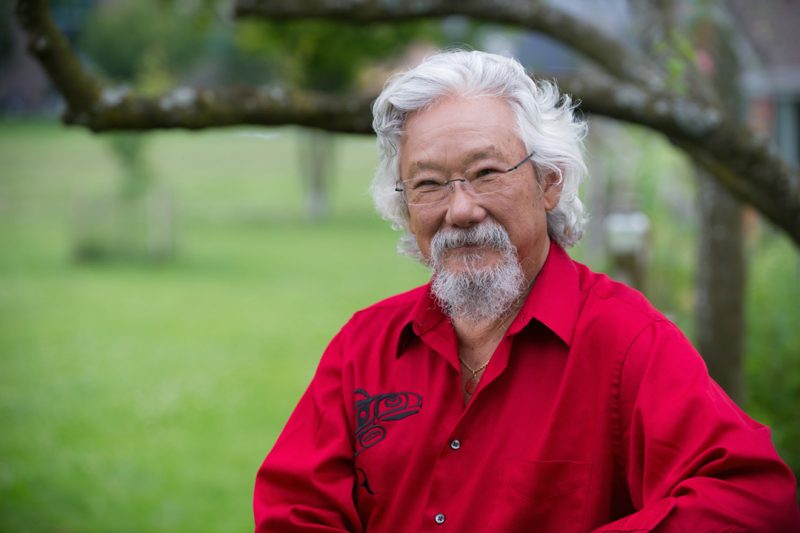“When an unstoppable force like Greta [Thunberg] meets an immovable clunk of politicians, my bet is on Greta. That’s why, inspired by her and by youth, I am amazingly against all odds, defiantly filled with hope.”
That’s what Stephen Lewis, Canada’s former ambassador at the United Nations, said in his speech during the Climate First Tour on Oct. 1 in Montreal.
Alongside Lewis was scientist, broadcaster, author and environmentalist, Dr. David Suzuki. Guest speaker, Ellen Gabriel, a famous Indigenous militant and feminist, also joined the event.
The event was launched a month ago as an opportunity for Suzuki and Lewis to speak directly to Canadians on the importance of climate change. Highlighting the urgency of the problem comes at an opportune time for Canadians to affect change with their votes.
“Our message tonight is that for the sake of the future of our children we must make climate change the top priority for every candidate running for office,” said Suzuki.
Over the last decades, governments and lobby groups have been ignoring and sleeping on the climate situation to advance economic growth, according to Lewis.
“The responsible perfidious government resembling political dinosaurs drunk on fossil fuel, they know exactly what’s required but there is some kind of self-inflicted paralysis,” said Lewis. “They have known for more than 30 years what’s afoot and they are criminally inert.”
Lewis also pointed at energy multinationals that have been sharing disinformation about the reality of climate change, while simultaneously investing $4.5 billion on new oil and gas exploration and development since last year.
The panelists did not cut it short for Canada’s inaction.
“How do you embrace the principles of the Paris Conference on Climate Change and then come home and buying a pipeline?” Lewis asked.
Trudeau’s acquisition of a $4.5 billion pipeline, after campaigning in 2015 on making Canada a leader in the fight against climate change, was harshly reprimanded.
All this state’s hypocrisy was a common theme in the three panelist’s speeches. Gabriel followed with the ongoing reconciliation attempts with Indigenous communities.
“Canada has broken all its promises,” said Gabriel. “Justin Trudeau did not fulfill a single promise to Indigenous people in Canada. He bought pipelines.”
Her testimony denounced a multitude of dangers intertwined with climate change – as simple as maple syrup, which needs cold weather to form, to the deterrence of the wildlife by the tar sands.
Climate change goes against and destroys all principles of the Indigenous tenets. According to these principles, everything in nature is interconnected. From the insect pollinating the root that feeds the animal hunters hunt, climate change is breaking a natural cycle.
But the issue is not only a governmental concern, Gabriel added.
“We are effing up the environment, and we are all responsible for it,” Gabriel said. “It’s up to every single individual in this room and beyond to be the solution to climate change.”
While the march for climate on Sept. 27 was highly honoured during the event, the experts stressed the importance of actively promoting and informing peers on the impact of climate change, especially with federal elections around the corner.
Lewis finished his speech by mentioning a collection of previous attempts at fostering political climate activism and the consequences it would have prevented.
“If we had taken the carbon reduction target seriously, instead of consigning it to oblivion, and had we begun the implementation of all the other interventions, this would be a different planet,” Lewis said. “We would not be discussing self-emulation. We would not have a generation of youth growing up with critical mental health symptoms of ecoanxiety.”
But hidden between reprimands, Lewis shared his hope in the youth movement that could highly influence the Canadian political arena.
Photo courtesy of Climate First Tour
